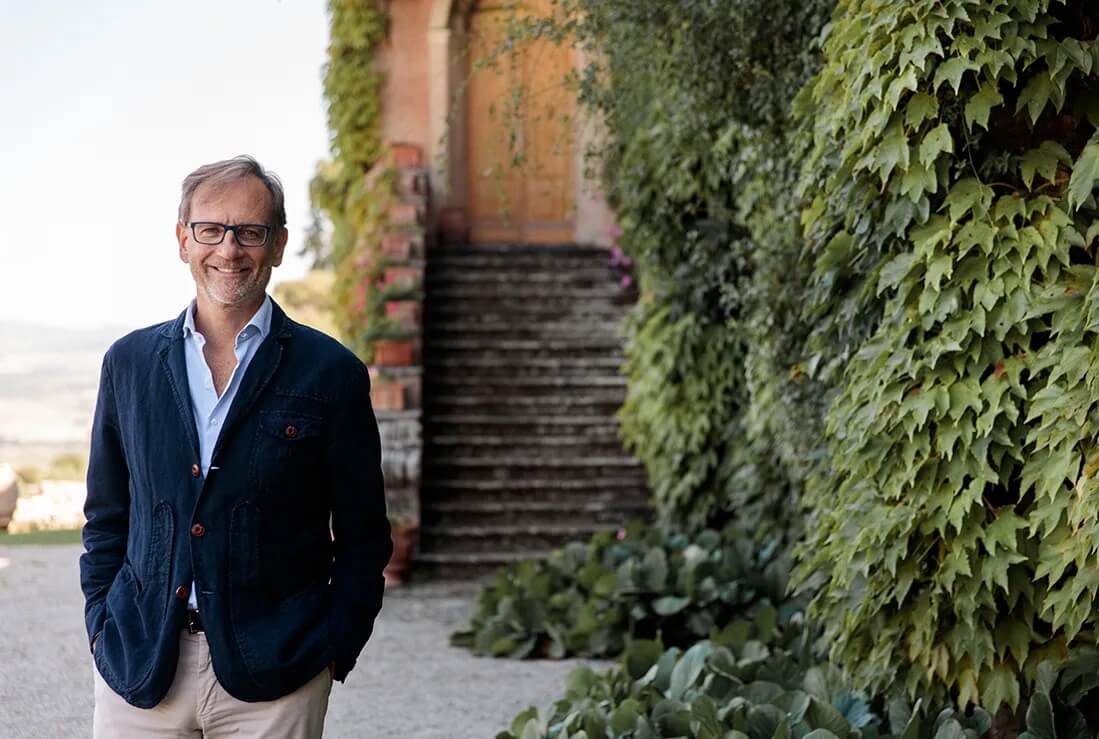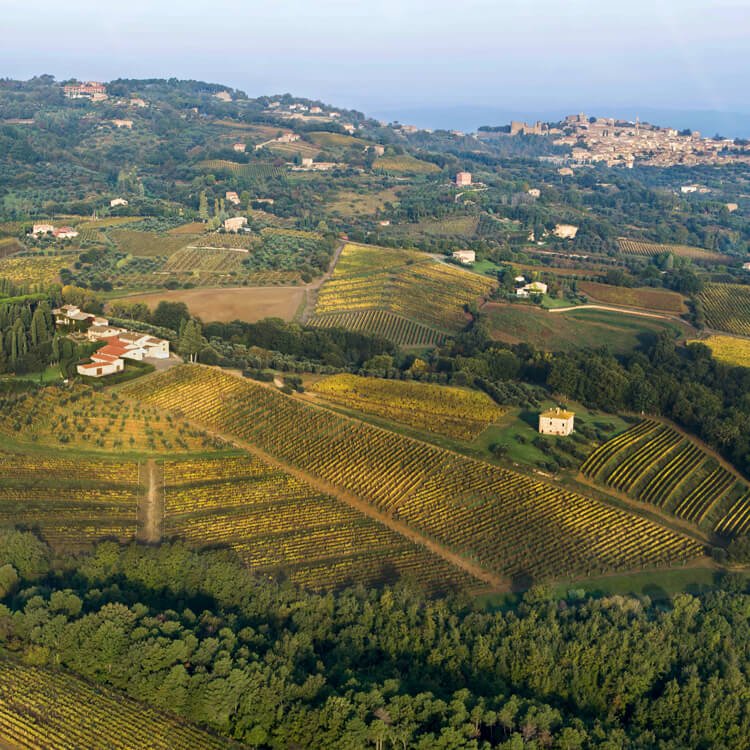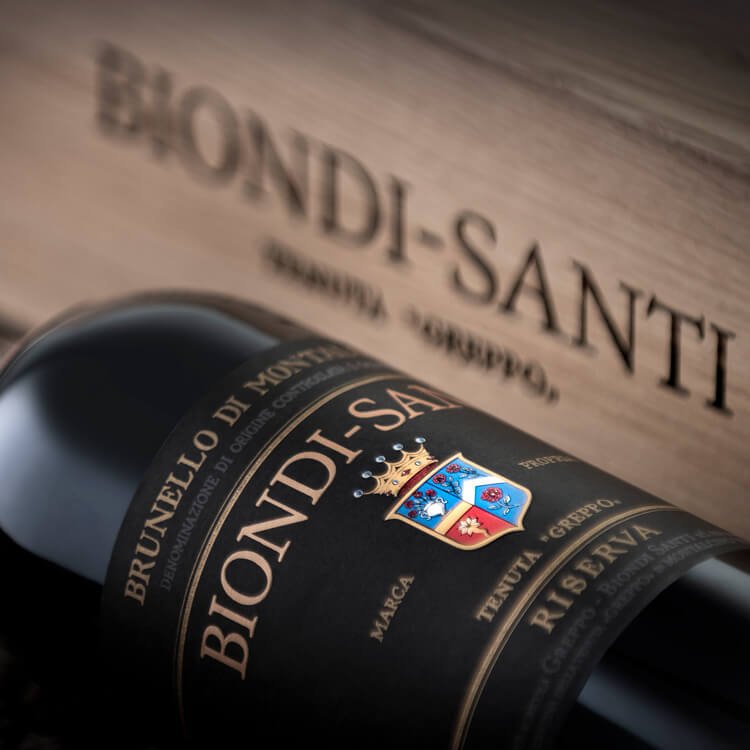▻ Biondi-Santi with Giampiero Bertolini
In conversation with Giampiero Bertolini
Episode Summary:-
Giampiero Bertonlini, CEO of Biondi-Santi, noted for some of Italy’s most illustrious wines, talks to Sarah Kemp about their evolution and the extraordinary family which created the legend. The history of the estate goes back to in the mid-1800s, when Clemente Santi began experimenting with Sangiovese at his Tuscan estate, Il Greppo. He called the wine Brunello, meaning “little dark.” Later, Clemente’s grandson Ferruccio Biondi identified a superior clone, Sangiovese Grosso, and was determined that quality, not quantity should be the estate’s mantra. He decided to produce a wine made with the distinctive clone Sangiovese Grosso BBSS11 (Brunello Biondi-Santi vine no. 11), and bottled in a Bordeaux-shaped bottle, which at the time was a sign of quality. Throughout Biondi-Santi’s history, Giampiero explains, the philosophy of the estate has been to create wines which are elegant, refined and long-ageing; they succeeded, and it flows through their history. In the 1960s, Ferruccio’s son Tancredi, who was an incredible winemaker, was tasked by the Italian government to write an important update, of new rules for Brunello di Montalcino, which helped revitalize the region’s identity. A generation later, in 1994, more attention came to the estate when they held a tasting of 100 years of Biondi-Santi, from 1888 to 1988. Nick Belfrage MW, the renowned Italian expert and author, gave the 1891 an unprecedented 100-point score. “The wines have a precise style, which is based on freshness, acidity, elegance and soft tannins,” Giampiero reveals.
“It’s an evolution, not a revolution.””
In 2017, the family sold the estate to the EPI Group, which owns Champagnes Piper and Charles Heidsieck, as well as Isole e Olena. Giampiero arrived in 2019. His first initiative was investing in the vineyards: regenerating the soil, re-evaluating canopy management, and replanting some of the vines. He found an incredible vineyard planted in the 1930s, with 50 different mother plants, of which 30 have been selected and are being trialled in their nursery, which is based on the family’s tennis court. He explains how they are monitoring the different clones and seeing how they are reacting to climate change. He also brought in Pedro Parra, the Chilean soil specialist, to map the soils of 32 parcels on the estate; they found 12 parcels that were representative of different soil types, and today they are harvesting and vinifying these 12 parcels separately every vintage, for further evaluation.
Giampiero also notes how they are looking at a variety of measures to combat climate change. “There is not one recipe,” he remarks. Certainly, he believes pruning is key to quality, and they are testing new structures to protect the fruit, including different-coloured netting. They are also looking at introducing different clones, once trialled at the nursery, as they may also help combat climate change. Another move since he arrived was buying 33 hectares of new vineyards, which share a similar altitude and northeastern exposure as the existing vineyards.
On March 1, the estate released Biondi-Santi Riserva Storica 1988 and 2010. Since 1888, Bionid-Santi has only produced 42 vintages of their Riserva bottling, and Giampiero admits there will be limited supplies in the market, a few hundred bottles for the world, and no doubt huge demand from collectors. At the same time, the long-standing traditions persist across the board: Though there is huge investment and experimentation happening at the estate, he reassures traditional Biondi-Santi wine lovers that, overall, “It’s an evolution, not a revolution.”
Running Order:-
-
0.00 – 13.14
“The wines have a precise style, which is based on freshness, acidity, elegance and soft tannins.”
– The history of Biondi-Santi.
– EPI Group buys Biondi-Santi in 2017.
– The investment in the vineyards.
– Giampiero’s first tasks.
– The 50 different mother plants in the 1930 vineyard. -
13.15 – 23.13
“It’s an evolution, not a revolution.”
– Pedro Parra’s soil studies.
– Harvesting and vinification by separate parcels.
– How Biondi-Santi is dealing with climate change.
– Buying the new vineyard.
– The release of Biondi-Santi Brunello di Montalcino Riserva La Storica 1988 and 2010.
RELATED POSTS
Keep up with our adventures in wine








John Stimpfig talks to Axel Heinz, who caused shockwaves last year when he left Ornellaia and Masseto to head back to Bordeaux to run Château Lascombes.